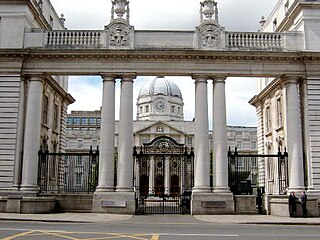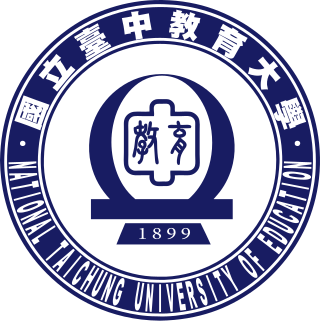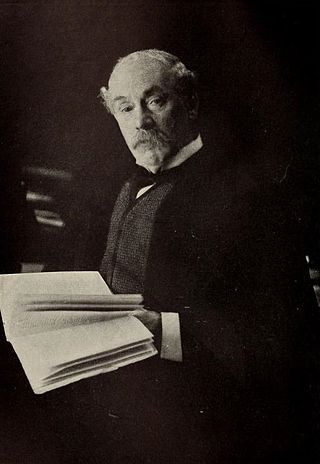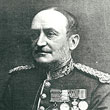This article needs additional citations for verification .(May 2021) |
The Science and Art Department was a British government body which functioned from 1853 to 1899, promoting education in art, science, technology, and design in Britain and Ireland.
This article needs additional citations for verification .(May 2021) |
The Science and Art Department was a British government body which functioned from 1853 to 1899, promoting education in art, science, technology, and design in Britain and Ireland.
The Science and Art Department was created as a subdivision of the Board of Trade in 1853, expanding the existing Department of Practical Art. Its first superintendent was Henry Cole, and it supported not just science but also "practical arts" – i.e. technology and design. The department benefited substantially from the Great Exhibition of 1851, part of the profits of which were distributed by the Commissioners of the Great Exhibition for educational purposes. That donation funded a large site in South Kensington accommodating the Science and Art Department, the South Kensington Museum, and other bodies. In 1856 the Science and Art Department was absorbed by a new Education Department, but retained considerable autonomy in promoting artistic and scientific higher education, especially for teacher training. [1]
The Science and Art Department took over the Government School of Design, founded in 1837, which became the National Art Training School in 1853, and finally in 1896 the Royal College of Art, under which name it still flourishes. It developed what became known as the South Kensington system in art education. The headmaster until 1875 was Richard Burchett. On the science side it ran classes in South Kensington in the 1870s, which led directly to the formation of the Normal School of Science, a constituent college of Imperial College London. From 1859 the Science and Art Department had offered examinations for prospective science teachers, and promoted evening classes in science across Britain. From 1872 the Science and Art Department began offering scientific higher education directly through evening classes at the South Kensington site. In 1880 these classes acquired formal recognition as the Normal School of Science.
During the 1880s a number of royal commissions considered the question of technical education, and their recommendations led to an increasing role in scientific training for other branches of government. The increased attention paid to education led to the formation of the Board of Education in 1899, into which the Science and Art Department was fully integrated.
The Royal College of Science is a higher education institution located in South Kensington; it is a constituent college of Imperial College London from 1907 until it was wholly absorbed by Imperial in 2002. Still to this day, graduates from the Faculty of Natural Sciences at Imperial College London receive an Associateship to the Royal College of Science. Organisations linked with the college include the Royal College of Science Union and the Royal College of Science Association.

The Royal College of Art (RCA) is a public research university in London, United Kingdom, with campuses in South Kensington, Battersea and White City. It is the only entirely postgraduate art and design university in the United Kingdom. It offers postgraduate degrees in art and design to students from over 60 countries.

Sir Henry Cole FRSA was a British civil servant and inventor who facilitated many innovations in commerce and education in the 19th century in the United Kingdom. Cole is credited with devising the concept of sending greetings cards at Christmas time, introducing the world's first commercial Christmas card in 1843.
Hereford College of Arts (HCA) is an art school based in the West Midlands, United Kingdom.

The Royal College of Science for Ireland (RCScI) was an institute for higher education in Dublin which existed from 1867 to 1926, specialising in physical sciences and applied science. It was originally based on St. Stephen's Green, moving in 1911 to a purpose-built "Royal College of Science" building on Merrion Street, now known as Government Buildings. In 1926 it was absorbed into University College Dublin (UCD) as the faculty of Science and Engineering.

The Lincoln College of Art was an educational institution devoted to the arts, based in the English city of Lincoln with its origins in the mid-nineteenth century. The institution changed shape and name numerous times over its history before being absorbed into the University of Lincoln. Midway through the nineteenth century, the then British Government's Department of Science and Art, based in South Kensington, began establishing a network of art schools as a means of promoting and aiding manufacturing. One of the oldest institutions of its kind in Britain, it became one of Britain's leading art schools, and was one of the first to introduce the teaching of the techniques derived from the French School of Impressionism. Many of its students went on to exhibit at the Paris Salon and the Royal Academy. Amongst its alumni are members of the Newlyn School and two Royal Academicians. It also popularised the art and crafts exhibitions in Lincolnshire that became important annual events in the late 19th and early 20th centuries.

George Wallis (1811–1891) was an artist, museum curator and art educator. He was the first Keeper of Fine Art Collection at South Kensington Museum in London.

Richard Burchett (1815–1875) was a British artist and educator on the fringes of the Pre-Raphaelite movement, who was for over twenty years the Headmaster of what later became the Royal College of Art.

Founded in 1854 as the Lambeth School of Art, the City and Guilds of London Art School is a small specialist art college located in central London, England. Originally founded as a government art school, it is now an independent, not-for-profit charity, and is one of the country's longest established art schools. It offers courses ranging from art and design Foundation, through to BA (Hons) undergraduate degrees and MA postgraduate courses in fine art, carving, conservation, and art histories. In addition, it offers the only undergraduate and postgraduate degrees in Britain in stone and wood carving: historic architectural stone and ornamental woodcarving and gilding.

The National Taichung University of Education is a university in West District, Taichung, Taiwan. Founded in 1899 at the Confucian Temple in Changhwa county, it moved to the current site in 1923.

Stratford-upon-Avon College is an English further education college in Stratford-upon-Avon, Warwickshire.

The Faculty of Engineering is one of four faculties of Imperial College London, in London, England. Imperial's Faculty of Engineering was formed in 2001, from two of the universities constituent colleges - the Royal School of Mines and City and Guilds College. The faculty is ranked as the top engineering institute in the UK in the 2021 Research Excellence Framework.

Bukovinian State Medical University is one of the largest institutions of higher education in the city of Chernivtsi, Ukraine. It is a modern multidisciplinary institution of higher medical education, included in the general register of the World Health Organization, the Great Charter of Universities, the European University Association, which trains applicants for higher education according to a step-by-step system of education

Sir Caspar Purdon Clarke was an English architect and museum director.

Henry John Webb (1846–1893) was an English scholar, who became a trained botanist before moving into medicine. However, it was eventually agriculture and the training of scientific, practical agriculturalists that eventually caught his imagination. In 1887 he accepted the position of Principal to the Aspatria Agricultural College, a radical institution in the North of England, which a group of enthusiastic amateurs had established in 1874, for the purpose of training the sons of tenant farmers and farm labourers. In 1891 he became sole owner of the College, which he rebuilt and under his guidance it became one of the foremost seats of agricultural learning in England. He was also a successful world record holding cyclist and tricyclist.
Walter Smith (1836–1886) was a British art educator and author of drawing books and books on industrial art education, known as leading early proponent of industrial design in the United States.

The history of state education in Queensland commences with the Moreton Bay penal settlement of New South Wales in Australia, which became the responsibility of the Queensland Government after the Separation of Queensland from New South Wales in 1859.

The history of Imperial College London can be traced back to the founding of the Royal College of Chemistry in 1845 in London, with some ancestral medical schools dating back to 1823. The college was formed in 1907 out of the royal colleges in South Kensington, and throughout the 20th century became central to the national strategy for technical education and research. It existed for most of its life as part of the University of London, only becoming independent in 2007.
Henry Alexander Bowler was an English artist. He was a teacher at the Royal Academy of Arts for many years, and exhibited paintings there.

Sir John Fretcheville Dykes Donnelly was a British major-general and royal engineer.